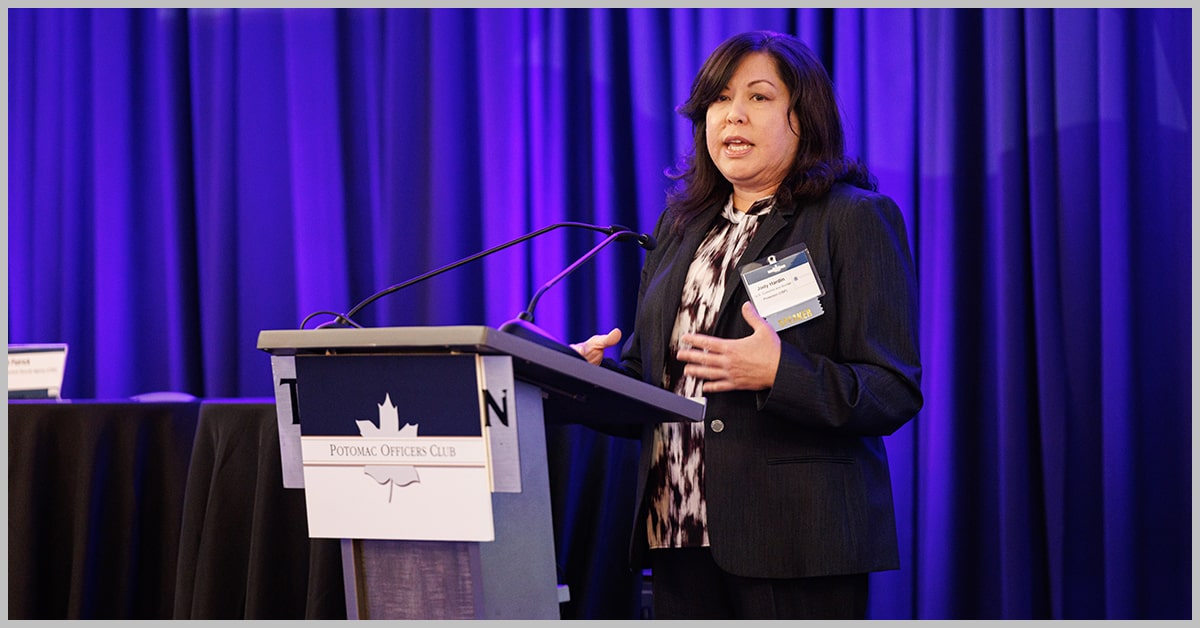According to Jody Hardin, executive director for planning, program analysis and evaluation at U.S. Customs and Border Protection, the agency is making progress in its journey to transform its traveler processing methods and technology.
“We are looking at segmenting not just travelers, but our prioritization of work that we need to be able to focus on that high risk. And again, that risk changes every day,” she said during the Potomac Officers Club’s 2023 Homeland Security Summit on Wednesday.
Hardin noted automation as a key component of CBP’s efforts to modernize the processing of both departures and arrivals at U.S. airports. An automated approach, she said, can enable real time information sharing between agency personnel, which helps CBP determine new threats or risks that need to be addressed.
CBP’s biometric entry-exit mission, said Hardin, was the “catalyst” for the agency’s efforts to upgrade its systems. This method involves using facial recognition technology to identify individuals, and CBP has already processed over 300 million travelers using biometric data. The biggest challenge at the start of the initiative, she said, was the lack of existing technology infrastructure.
To overcome this hurdle, the agency worked alongside industry partners to develop new methods that met both CBP requirements and those of commercial airlines. Hardin cited boarding pass checks as an automation success story. Now, individuals can simply walk up, take a photo and board the flight. With this process, individuals are easily checked in, and “all of the information that they’re required to transmit to CBP is now with CBP.”

“What we found is that the adoption of that technology, as long as it was part of a process that people already knew, was something that was just adopted really easily,” said Hardin.
“Taking that model and applying it across the board is how we are looking to do innovation now,” she added.
A second example Hardin shared is the process of matching passport photos to individuals. Previously, she said, CBP personnel would have to take a passport, look at that passport, match it to individuals, swipe it in the system and make sure that the system information matched up.
“It’s done now in seconds. We just take one photo and everything’s done. So it’s really sped up that process that we’ve got and we’re looking to model that now in all of our different environments,” she elaborated.
Trusted traveler programs are another instance in which automation has demonstrated its benefits. Hardin said that the need to add value to paid offerings motivated CBP to look into new processes.
“We’ve done different types of automation now where they can actually go through and not have an officer taking their photos. They have portals now that are touchless. You walk up, it takes the photo and you can just walk through there. Then, an officer just does a quick verification and you’re out the door,” she explained.

Don’t miss the Potomac Officers Club’s next event, the 2023 Healthcare Summit on Dec. 6. At the event, government and industry experts will come together to explore the ways the public sector is using new technologies and approaches to revolutionize government health initiatives. Click here to learn more, and click here to register.







